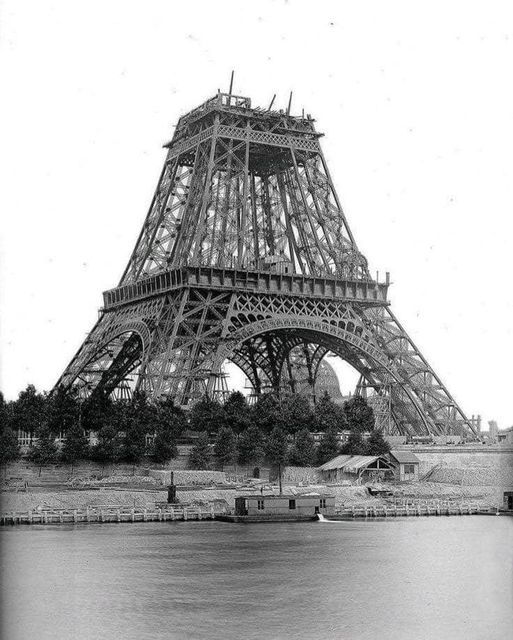

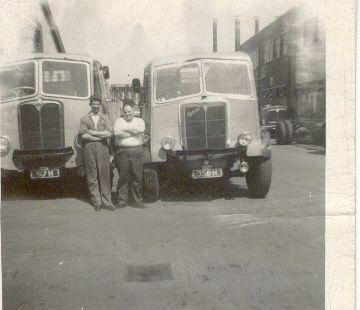

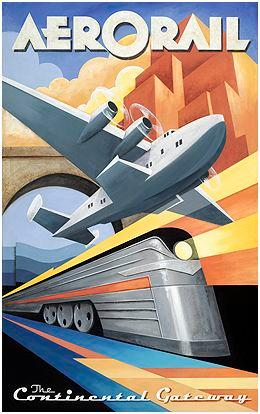



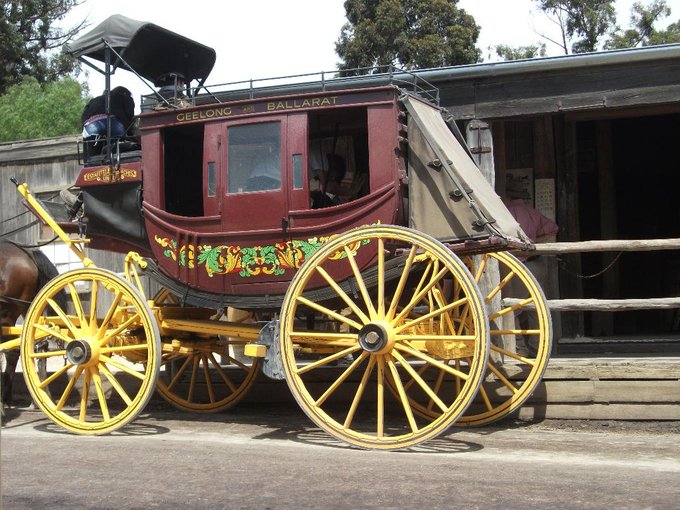

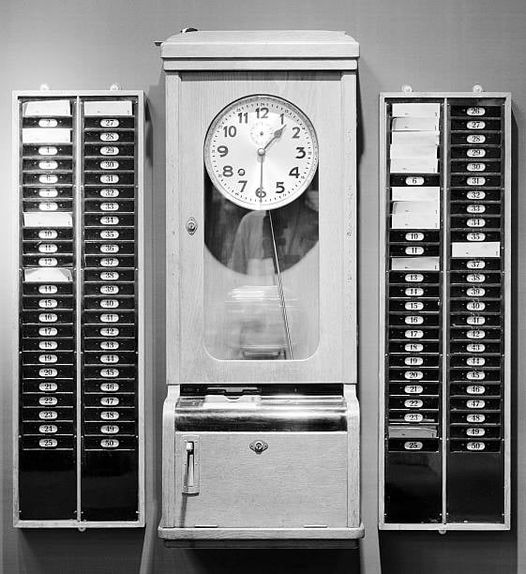


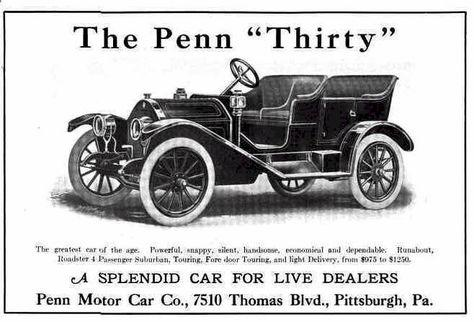


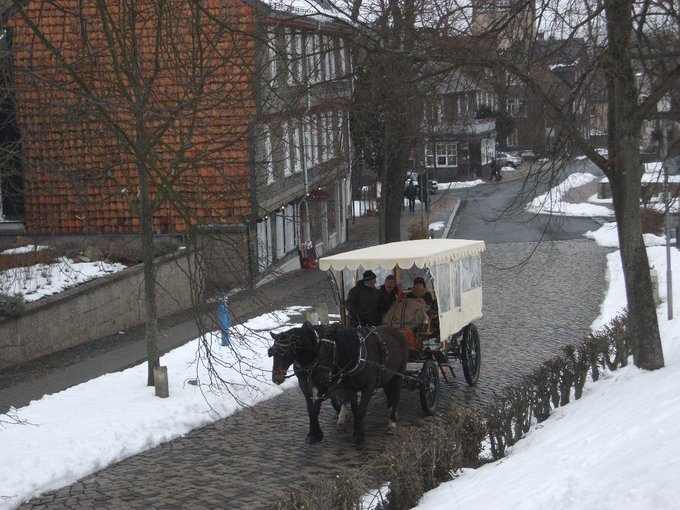



Thanks to Dave, Quokka, Tony.
Bonus:





















Thanks to Dave, Quokka, Tony.
Bonus:

I cost nothing to run so donate to https://www.broadcastingscotland.scot/donate/
The bilingual blog about all things British
Love, theatre and ideas
British Wildlife & Photography
Why Scotland should be an independent country
Thoughts about Scotland & the world, from a new Scot
Bipartisan dialogue for the politically engaged
Impartial Everytime Always
We Provide The Facts, You Make The Decisions
Exploring Rhymes, Reasons, and Nuances of Our World
Mark Doran's Music Blog
Songwriter / Guitarist
This site supports Scottish Independence
A comic about history and stuff by FT
The embittered mumblings of a serial malcontent.
an irreverent look at UK politics
Exploring the Depths of Curiosity
Nature + Health
http://netbij.com
Movies, politics, comedy and more...
Yay, tris! You are early this week.
Pic. 1: Eiffel Tower under construction.
Pic. 2: I have a vague memory of Creamola. But it wasn’t the only fizzy-drink-as-a-powder on the market.
Pic. 4: Funny how similar Nancy Sinatra and Mary Tyler Moore looked. They could have been sisters.
Pic. 9: An Aussie stagecoach. Back in the days of the gold rush.
Pic. 10: Seen that one before. What regiment are those re-enactors trying to represent? 97th ??? 68th ??? The lace on their tunics is a clue.
Pic. 12: ‘Allo ‘Allo. I never was a fan of that series. Poor taste, in my humble opinion.
Pic. 13: Cilla Black. Just look at that hair!
LikeLiked by 1 person
I thought I’d let you have an early night, DonDon.
Cilla Blacks hair is unreal…
Dave will tell you about 10.
I added another fizzy powdery drink at the end…
No 1 is indeed in 1888.
I though ‘Allo Allo’ was hilarious.
I didn’t find it offensive, although I can see how some people could, but for me it poked fun equally at the English, the Germans, the French, the Italians and at the end the Americans.
I don’t usually like formulaic comedy, but I loved that.
My favourites were Herr Flic and Herr Von Smallheusen.
LikeLike
Wasn’t Rene supposed to be Belgian?
LikeLike
DonDon: According to his biography, he was born in Nancy.
LikeLike
Interesting Wikipedia article on the Eiffel Tower. I didn’t know that it was not designed by Eiffel and, in fact, he was not enthusiastic about the original design proposal.
LikeLiked by 1 person
I didn’t know that… but I just looked it up:
https://en.wikipedia.org/wiki/Eiffel_Tower
LikeLike
Number 10 was taken in the colony called Australia, just repeated it to remind us what being a colony means, the dressing up of toy soldiers, still in use in london’s buck house.
Can’t remember Blackpool’s tower being so near such nice gardens.
LikeLiked by 1 person
9 & 10 are taken at Sovereign Hill an 1850s re-enactment location in Ballarat, Victoria. This is where the Eureka uprising took place against the redcoats and their gold licence.
LikeLiked by 1 person
Kangaroo, that being the case, the redcoats represent the 12th Foot.
LikeLiked by 1 person
If you think Cilla’s hair is a bit way out I suggest you look at what women did to their hair historically – especially in the 17th and 18th centuries.
Marie antoinette for example
The men had just as overblown fashions, but mostly that was wigs.
LikeLike
I wonder how long it to Marie Antoinette to do that every morning when she got out of bed!
Can’t help thinking that she’s be so tired once it was done that she’s want to have a sleep!
And what happened in the wind?
LikeLike
Pic 7 – TV sitcom, ‘George & Mildred’, starring Yootha Joyce and Brian Murphy – Oh, how we laughed! (not).
Pic 11 – Works clock, for clocking in and out at the beginning and end of the working day – I remember them well from some early jobs.
Pic 18 – the Queen Muvver – God Bless ‘er! – wiv her trademark drink in ‘and.
Pic 19 – Glesca – 1960s? – the hulk in the background is, I think, Green’s Playhouse (later The Apollo) In the foreground is the King Burger, where I ate once or twice – twice was probably a bad idea.
LikeLike
I think you could be right. I went to the Apollo twice – presumably ‘cos I couldn’t make the gig at the Odeon/Playhouse; SLF and UFO. Early exit to get the last train, as I remember.
LikeLiked by 1 person
…and as a PS, the white 2-door Ford Escort is probably now worth at least £10k in its non-rusty condition. P6 Rover in Tundra, too.
LikeLiked by 2 people
I read an interesting piece about the Queen ‘Mum’ (Gawd bless ‘er, indeed) after a visit to some impoverished part of the country (“to raise morale”), said to a lady-in-waiting, “I don’t know why these people CHOOSE to live in poverty.”
In the 1950s the primary school I attended was close to a main road and, from time-to-time, a motorcade with some royal would go along it. The entire school was marched out, each of us given small paper union flags, and lined up along the pavement to wave them. We were part of the “joyous crowds” ‘thronging’ the route.
Why I am I a republican????????
LikeLiked by 2 people
Alasdair. I’ve just been reading about the awful woman that everyone loved, because she was everyone’s favourite granny.
She had no idea about how people lived. Apparently three members of her own family (the aristocratic family she was born into, not the royal one she became part of) were mentally disabled.
They were banished to a home somewhere and they were left there without ever having a visit from a member of the family and with no birthday or Christmas presents.
She came occasionally to Dundee and on one occasion my mother and her friend were in the town when she was arriving at the Caird Hall. My mum’s friend wanted to go to stand in the crowd to catch a glimpse of her. My mother decided instead to go into a shop and browse.
She quite literally refused to cross the road to see her.
I wonder if they know that many of the people, particularly the kids, who “throng the routes” would rather be anywhere else.
LikeLiked by 1 person
I like that story about your mother. Dundee women are famously independent minded. Elizabeth Bowes Lyon had a pad near Dundee at Glamis, but I don’t think she worked in the mills. Of course, DC Thomson papers are notoriously forelock tuggers.
LikeLiked by 2 people
My father had a huge dislike for the woman.
Would never have a butcher’s apron in the house, he was a confirmed atheist but didn’t cause any discord, he just said ‘Make up your own mind about religion’.
His mother, my grandmother was a church goer until her death, all her family were not but their own families were allowed to decide their own view.
LikeLiked by 2 people
My father loathed the lot of them. Called them parasites.
LikeLiked by 1 person
I doubt she had even heard of a jute mill!
LikeLiked by 1 person
George and Mildred was, indeed, awful. And Yootha, rather like the QM was fond of a drink or 20. She died of liver problems in her 50s.
Old Liz, accustomed to us paying for VERY expensive vintage champagne carried on to 101.
Greens Playhouse indeed!!
LikeLiked by 1 person
Don’t know where you sourced the photie for №2 Tris, but that’s the modern (currently available) version. The plastic lid is the giveaway; the original had a tight fitting metal lid like Lyle’s golden syrup or treacle.
A friend of mine got some online a year or so back. The general consensus was that childhood nostalgia, for said product, was wildly misplaced; it was truly boggin’!
LikeLiked by 1 person
I really liked Creamola Foam. I associate it with caravan holidays as we always took some with us.
LikeLiked by 1 person
For a while a few years ago, you could get something that was just like it. I tried it but it didn’t appeal.
But it wold be great for camping type holidays. A lot of drink in one small space.
LikeLike
Oh… damn. Sorry, Drew.
That will be another week’s wages docked bt Munguin.
I guess, the things you liked in your youth might taste slightly different now.
Here the two… old and new…compared

LikeLike
The last time I saw Cremola Foam in a shop was in Stornoway but I bought it’s new incarnation, Krakatoa Foam, in the sweet shop in Braemar about 5 years ago. I only found out recently that Cremola Foam was only ever sold in Scotland and Ireland.
LikeLiked by 2 people
I hasten to add that the apostrophe in “its” was inserted automatically.
Not guilty!
LikeLiked by 1 person
Munguin says it’s OK … or even its ok. 🙂
LikeLike
What did you think of the Krakatoa Foam?
LikeLike
I loved it!
Probably fewer lethal ingredients than the original but well worth buying.
LikeLiked by 1 person
LOL yes, that’s true!
LikeLike
The lid is fitted into the closing ring on the cans, Drew.
Made these Creamola Foam tins by the tens of thousands every day on the auto line in Drummond’s of Greenock back in the 60s.
The line ran from 7:30 in the morning until 10:00 at night and never stopped. Still couldn’t keep up with demand.
The body of the can was fastened with a lap seam and the closing ring and bottom with a double seam.
There’s a name for everything…
LikeLiked by 1 person
LOL LOL
LikeLike
I have seen the calculator! Pretty catchy!
LikeLiked by 1 person
HP48XG Graphic Calculator, Middager, sent in by Quokka in Australia.
He says: While I can
only use the basic functions, my old engineer boss knew how to get the
best out of it and solved a good few control system timing problems with
it. The main feature is that it does not have an equal key and has the
graphics inbuilt which the original versions did not have the computing
capability. It is usually called a Reverse Polish Notation (RPN) calculator.
LikeLiked by 1 person
# 4 ……Nancy is wearing Boots of course.
#14…….Wiki says that the Penn Auto Company of Philadelphia made cars in Pittsburgh for a couple of years. In 1911, “one model was available, the Thirty. This was a 4-cylinder, 30 hp car with a wheelbase of 105 in. Customers could choose from two body styles, the Model R 2-passenger Roadster, and the Model T 5-passenger Touring. At $975, or $1075 respectively, they were remarkably competitive.”
https://en.wikipedia.org/wiki/Penn_(automobile)
LikeLiked by 1 person
$1,000 back in the day would be around $30,000 now.
They look as though they might have been cold in the winter… as does Nancy’s skirt!
LikeLiked by 1 person
Tris……They wore skirts short back then. 😉
Yes, before Henry Ford and the Model T, automobiles were playthings of the very wealthy.
LikeLiked by 1 person
Interesting that it’s right-hand drive. This was in the time when some states drove on the right and some on the left of the road. It was only with the coming of mass car ownership and interstate driving after WW1 that right-hand running was mandated across the US and so only LHD cars were seen.
A few European countries similarly had differing arrangements in different areas in the early days.
Even more strangely, all Bugattis produced by the original company from 1909 to 1952 were right-hand drive, in spite of being French and regardless of the market into which the cars were sold.
Bugatti decided from the outset that the right was the proper side for the steering wheel to be mounted and would brook no argument.
You want a car with left-hand drive?
Buy another make, then…
LikeLiked by 2 people
I had no idea about that.
How come most countries ended up driving on the right?
LikeLiked by 1 person
It has been suggested that driving on the right/left was a leftover from jousting tournaments where the horses had to pass on a particular side.
No I don’t get it either.
LikeLiked by 1 person
It’s as good an explanation as any, Kangaroo.
🙂
LikeLike
morego……That’s interesting! I didn’t even notice the right hand drive on the Penn “Thirty” model of 1911. According to this British article, the switch to left hand drive in the United States generally occurred in the middle 1910’s after the great popularity of the Ford model T of 1908, which was left hand drive.
http://www.lostinthepond.com/2013/03/fact-american-steering-wheels-havent.html
I see that the Ford model A of 1903 (from Henry Ford’s first auto model naming using the letters of the alphabet,) was right hand drive:
LikeLiked by 1 person
Interesting, Danny.
I suppose in the very early days it didn’t matter which side you drove on, as there were so few cars and they moved so slowly in the cities.
You just got around as you could.
That changed as the roads got busy.
Most of Europe drives now on the right but that came about in a similar piecemeal way as happened in the US.
Well into the 1930s Portugal, Austria, Czechoslovakia and Hungary were still driving on the left but the latter 3 swapped under occupation or pressure from the Nazis.
Sweden and Iceland didn’t change until the 1960s.
LikeLiked by 2 people
morego……Fascinating! About the USA and Canada in North America, this article says that Canada was not completely uniform on right vs left driving until after WWII:
“In the early years of English colonisation of North America, English driving customs were followed and the colonies drove on the left. After gaining independence from England, however, they were anxious to cast off all remaining links with their British colonial past and gradually changed to right-hand driving. Incidentally, the influence of other European immigrants, especially the French, should not be underestimated. The first law requiring drivers to keep right was passed in Pennsylvania in 1792, and similar laws were passed in New York in 1804 and New Jersey in 1813.
Despite the developments in the US, some parts of Canada continued to drive on the left until shortly after the Second World War. The territory controlled by the French (from Quebec to Louisiana) drove on the right, but the territory occupied by the English (British Columbia, New Brunswick, Nova Scotia, Prince Edward Island and Newfoundland) kept left. British Columbia and the Atlantic provinces switched to the right in the 1920s in order to conform with the rest of Canada and the USA. Newfoundland drove on the left until 1947, and joined Canada in 1949.”
https://www.worldstandards.eu/cars/driving-on-the-left/
LikeLiked by 1 person
Great read, Danny.
Thanks for that.
Some years ago there was a thriving trade in Ireland in second-hand Japan-only models of Japanese cars.
These were ones which had failed the notoriously tough 6-year equivalent to the MOT test.
They couldn’t be sold in Japan but being RHD, were still able to be exported to markets which drove on the left.
The 6-year test is a story in itself, but they were easily and cheaply brought up to European standards and so found a ready market in Ireland.
The EU transport mandarins took a dim view of the trade however and the regulations were changed, bringing the nice little earner to an end within a few years…
LikeLiked by 1 person
morego……Interesting about the second hand Japanese cars imported to Ireland! That made me wonder if RHD cars can be used in the USA. It seems that while there are various restrictions, with a lot of government red tape, that may offer impediments to newly manufactured cars (which could be RHD) from foreign countries being bought and shipped here by US citizens, there is nothing in principle that prohibits cars with right hand drive being bought for use on American roads. There are apparently no traffic laws in any of the States that prohibit the use of RHD vehicles on their roads.
I had also forgotten that vehicles used by the US Postal Service for mail carrier vehicles are all right hand drive, and are domestically manufactured for the American market.
https://www.carsdirect.com/car-buying/how-to-import-a-car-from-europe
LikeLiked by 1 person
All news to me. I should watch one of these old “wild west” film and see what side of the track Wells Fargo coaches were on!
LikeLiked by 1 person
Tris…….It was interesting to learn that while driving on the right side of American trails and roads started to be the rule….and even local law……as early as post-revolutionary times (in the 1790’s or very early 1800’s,) the drivers of horses and horse teams usually drove wagons, buggies, and stagecoaches from the right side of the driver’s seat. (Usually attributed to right handed drivers wielding the whip better from the right side.)
https://www.legendsofamerica.com/we-stagecoachdriverwhips/
https://truewestmagazine.com/wagon-drivers-right-side/
Apparently, that right handed driver’s position often carried over to the early automobiles, which commonly had right hand drives. The switchover to left hand drive autos is indeed often attributed to the popularity of Henry Ford’s Model T, which appeared in 1908, and which was left hand drive.
LikeLiked by 1 person
Wow… Nice one Danny.
My car will be pleased that I’ve given up on the whip though!!!
Henry (you can have any colour of car as long as it’s black) Ford.
What a man.
LikeLiked by 1 person
LOL….Yes, Henry was pretty influential in the auto biz.
Interesting that right hand and left hand drive on motorcars didn’t necessarily (at least in the early days) exactly relate to the side of the road people drove on. By the early 1900’s in America for example, driving on the right side of the road was well established in custom and law, whereas many early motorcars had right hand drive. I suppose that having the driver side of the car reversed right for left from the side of the road that’s driven on makes the most sense, since the driver is then situated where he can best judge the clearance with oncoming traffic.
While there are some USA trade laws that prohibit the importation of new cars made in countries where right hand drive is standard, there are actually no laws against driving right hand vehicles on American roads. So Americans can buy pre-owned right hand drive cars from the UK for example. In addition, some right hand drive vehicles are manufactured in the USA for the American market…….especially for use by the US Postal Service, which uses right hand drive for all mail carrier vehicles.
https://www.nadaguides.com/Cars/Shopping-Guides/can-you-buy-right-hand-drive-cars-in-usa
LikeLiked by 1 person
Well I’ve always thought it made sense to be able to see oncoming traffic and so o be away from the kerb, whichever side of the road you are on.
I’ve driven a right hand drive in countries where you drive on the right and it’s rather scary.
Back when there were hardly any cars on the road, I’m sure it was not nearly so frightening.
But driving through Paris on the wrong side of the road… EEEEK
LikeLiked by 1 person
Tris…….Oh yes!
I suppose I could handle left lane driving on a two-lane country road with very little traffic, but driving in a big city……Paris, London, New York….with heavy traffic and multiple lanes would surely be terrifying. All your basic driving habits and instincts would be reversed and confused. Maybe people in the UK and Europe might handle it better than Americans, who may not have any experience at all with left lane driving.
Driving in Manhattan is terrifying enough for me; so I can imagine how it would be with the lanes reversed. 😉
And I just learned a new British English spelling! British English “kerb” = American English “curb”. 🙂
LikeLike
https://wikidiff.com/kurb/curb
Curb here means something entirely different.
Yes, when I was in Budapest a few years ago, my friend, Dani had not long passed his test. He was going to drive us to Lake Balaton where his dad had a cabin.
He borrowed his mum’s car… a massive thing and very expensive.
As we were leaving his house and driving into town to find the motorway to Balaton, he said, “I hope I cope Ok with this. If not you’ll have to drive”
All I cold think was EEEEEEK. Please cope, Dani.
LikeLiked by 1 person
I had no idea you had two different “curb/kerb” words. Our experience in America is that having just one word for two kinds of “curbs” doesn’t seem to cause undue confusion. There’s that whine/whing thing that we could probably simplify too. 😉
I would certainly want to avoid driving a friend’s mother’s car in such an unfamiliar driving situation too.
LikeLike
In GREAT Britain, we have more words for things than any other country… because we are better than everyone else… and of course, we have Brexit!
LikeLiked by 1 person
Yes Tris, there’s probably more words in British English than are absolutely necessary; sometimes with more letters.
It’s interesting to immediately spot all the internet articles that were composed in British English, as soon as you see an “our” word like “colour” of course, and any of the common words with S instead of Z (civilisation), or C instead of S (defence.)
My Hotmail spellchecker accidentally got set on “British” instead of “American”, and started lighting up like a Christmas tree with my “misspellings.” I’m not sure what it would have done with “kerb”. A spell change suggestion to “cerb” wouldn’t help at all, and with only four letters to work with, it might not spot the two-letter change to “curb.” 😉
LikeLiked by 1 person
Just thank Munguin you now know the difference. I’m sure it will change your life completely!!! :0
https://en.wikipedia.org/wiki/List_of_dictionaries_by_number_of_words
LikeLiked by 1 person
Tris……Always something new to learn on Munguin’s! The difference between curb and kerb being just the latest example. 🙂
Interesting about the number of words in various languages. Depends on how you count them of course. I see for the British OED, it shows “273,000 headwords; 171,476 of them being in current use,” but with “over 600,000” word-forms.
This compares with the Merriam-Webster American dictionaries. The flagship Merriam-Webster…….an unmanageably large single volume which usually rests on a reading stand in libraries……is the unabridged “Webster’s Third New International Dictionary”, which shows 470,000 entries. The popular long-published (since 1898) abridged edition that people actually own and use is “Merriam-Webster’s Collegiate Dictionary”, now in its eleventh edition, which Amazon says has 225,000 definitions.
Interesting!
LikeLiked by 1 person
And to think, Danny, that most people get by on something between20,000 and 40,000 words!
LikeLiked by 1 person
Words in his (Trump’s) vocabulary I mean! 🙂
LikeLiked by 1 person
100 words I mean!
(I’ll get this comment placed correctly sooner or later……LOL.)
LikeLiked by 1 person
PS Tris……I’d say that using a whip on your car would be both inhumane and ineffective. 😉
LikeLiked by 1 person
lol.
I’ll try to remember that, Danny!
LikeLiked by 1 person
PS……I just realized that driving in Paris and Rome would only have the standard big city traffic issues. Only in the UK would you have the right lane-left lane confusion added to it. I guess that all of Europe drives on the right.
LikeLiked by 1 person
Yes. You’d be OK…except that Parisian traffic is unbelievably awful. Worse than New York.
Someone once asked me how to say “road rage” in French.
I said “driving”!
I worked with a French girl here in Scotland and we became good mates. She used to drive here swearing and shouting at other drivers in French. I used to say… careful Nathalie, they can hear you… to which she would reply, but they don’t speak French.
Then we ended up a Stendhal University in Grenoble together and again, she was driving and again, she was swearing in French… I had to remind her that the drivers could understand every foul word!”!!
Oups, she said, which translates as ooops!
LikeLiked by 1 person
Loved the French “road rage!”
So there are French swear words too. I’m surprised that the famous French language authorities allow such a thing. 🙂
LikeLiked by 1 person
Ha ha I’m not sure that the Académie Française actually “approves” them, per se!
LikeLiked by 1 person
🙂
LikeLike
And I’m pretty sure that Trump probably has 100 or so. 🙂
LikeLike
Most of his words don’t make any sense anyway, Danny!
LikeLiked by 1 person
# 8 :

This is one of the legendary line of Hewlett-Packard shirt – pocket – sized electronic calculators, which for 50 years have been used in science, engineering, mathematics, statistics, business, etc. This is the HP 48GX, one of HP’s 48 Series of graphing calculators.
The HP calculator line began in 1972, with the HP-35 ……..”Hewlett-Packard’s first pocket calculator and the world’s first scientific pocket calculator: a calculator with trigonometric and exponential functions.” It spelled the end of slide rules, and trig and logarithm tables, as tools for scientists and engineers.
The HP-35 was followed just one year later in 1973, by the HP-45, which more than doubled the scientific and mathematical operations that it could perform. Both models cost the same $395.00, which in today’s dollars is about $2,650.00.
I’ve used one of the HP-45s that’s still operating where I work.
HP-45:

There’s an old story about one of our engineers from years past who bought an HP-35 as soon as it was available, and was then pissed off when Hewlett-Packard, just one year later, released the HP-45….twice the calculator, at the same price. But it was even worse than that. As he proudly showed off his newly purchased HP-35, he realized that there is no actual squaring function…..x^2……on the HP-35 keyboard. There’s just an exponential function…..x^y. So if you want to square a value of x, you enter y=2, the value of x, and then press x^y. Thing is, it uses a natural logarithmic algorithm, with an approximation that shows up out in the eighth decimal place. AND, there’s no way to choose a lesser number of significant digits in the display than the full ten significant digits!
Therefore, you calculate “5” squared by entering 5^2, and you see the entire ten digit display from the logarithmic calculation, which is 24.99999999. So he was savagely ridiculed for having a cutting edge $2650 calculator that thinks “5” squared is 24.99999999. (Later, he learned that there IS a dedicated squaring function on the HP-45, which therefore knows that “5” squared is actually 25.00000000.) 😉
https://en.wikipedia.org/wiki/HP-35
https://en.wikipedia.org/wiki/HP-45
LikeLiked by 1 person
A great, and tasteless, calculator trick was to type in 7134, enter it in to the memory then type 9315 and enter that in to the memory too. By holding the calculator upside down and pressing the memory button repeatedly you could get the calculator to read SIEg hEIL.
LikeLiked by 2 people
LOL.
Don’t tell Priti Patel!
LikeLiked by 2 people
Iain……:-)
LikeLiked by 1 person
5318008.
LikeLiked by 2 people
Nope… not getting it.
LikeLiked by 1 person
Tris…..For 5318008, the upside down “8”s read like “B”s.
LikeLiked by 1 person
Oh… ha ha ha … I never thought about standing on my head 🙂
LikeLiked by 1 person
LOL….LOL……I’ve found that turning the calculator upside down is definitely easier. 🙂
LikeLiked by 1 person
Ah, yeah, but you have a STEM mind… and I’m a dumbo! (says Munguin).
LikeLiked by 1 person
LOL Tris…….I’m also not very athletic. 🙂
LikeLiked by 1 person
You can’t have everything, Danny!!!
Well, unless you are Munguin!
LikeLiked by 1 person
Derek……Excellent!
LikeLike
Oops!
LikeLiked by 2 people
Indeed!
LikeLiked by 1 person
Ha ha ha ha ha ha ha ha ha ha ….good story, Danny.
It reminds me of a story my father used to tell about a university lecturer of his who used a slide rule for every single calculation…
He was going through a complex calculation on the blackboard, using, at each stage, his slide rule.
Finally, the calculation came down to something extremely simple…. I can’t remember exactly what, but clearly something that even a non STEM mind could have done in their head… and the students burst out laughing as he reached for his rule.
LikeLiked by 1 person
Tris……LOL! Yes, I’ve done that too, but with my electronic calculator. I’ll be doing a string of calculations, and then find myself oh-so-carefully entering something like 10 X 2 to calculate “20”.
I knew a retiree who talked about his young days as an engineering student at Purdue. Popular attire for the young student engineers were so-called “slide rule pants”. These were trousers with a long narrow pocket down the leg in which to carry your slide rule around campus. 🙂
The full-function scientific shirt pocket electronic calculators killed the slide rule overnight. Same for the trigonometry and logarithm tables in mathematics manuals, which you used for calculations with more precision than a slide rule with its 2 or 3 significant digits could deliver.
LikeLiked by 1 person
Aye: Logs sines and cosines?
LikeLiked by 1 person
Tris……Yes, I remember once in a math class having to use math tables of sines, cosines, tangents, natural (base “e”) and common (base “10”) logarithms, etc……..just to appreciate how calculations were once done before electronic calculators came on the scene, and all you have to do now is push buttons.
It was easier to use a slide rule if you knew how, but a slide rule would only give you (at very most) three to four significant digits, with one of them just estimated. I never really learned how to use the many different slide rule scales for various calculations…….except for the C and D scales used for simple multiplication and division.
I found a nice illustration of the mathematics of the exponential x^y button on a scientific calculator. (The one that shows up on the HP-35 calculator as 24.99999999, when you press the x^y button for five squared…….5^2. 😉 )
https://math.stackexchange.com/questions/21381/how-to-calculate-a-decimal-power-of-a-number
LikeLiked by 1 person
All goes right over my head, Danny!!!
LikeLiked by 1 person
Tris…….LOL…….All those sines and cosines! A piece of cake when you only need to push buttons on a scientific calculator. 🙂
LikeLiked by 1 person
Even pushing buttons is a bit techy for me mate!
LikeLiked by 1 person
LOL!
LikeLike
I had a trip to France during the week. All COVID passports worked a dream. All cafes asked for one. Cannot see the fuss about it.
Creamola Foam was the taste of the 1960s 1970s.
Cilla Black’s hair colour was out of a bottle. She was a brunette.
I wonder where I can sample those 7 UP chocolates?
I couldn’t bear to watch ‘Allo ‘Allo which was a send up of the BBC series, Secret Army. All those men and women who lost their lives sending airmen out of Nazi occupied Europe and back to Blighty.
Here is one of the Comete network, Andre Mumon being interviewed in English.
LikeLiked by 1 person
Number 9 – the replacement for the scrapped HS2 Leeds extension.
Number 18 – preserved in alcohol.
LikeLike
LOL.
In the book I’m reading at the moment about the royals I discovered a lot about that wicked old woman that everyone thought was a lovely grandmother type.
She was a vile racist, who enjoyed shooting animals for fun.
And she started drinking at midday… at our expense.
LikeLike
LikeLiked by 1 person
I can’t understand the Brits’ reluctance to use these passports.
It sort of reminds me of the fuss they made over identity cards, when someone proposed introducing them a few years ago.
They carry bus passes with their photographs on; they carry credit cards with their bank account; they carry driving licences with a photograph and they carry passports when they go abroad. What was wrong with an identity card?
But, you know, people who carry mobile phones with them, which ping everywhere and mean that police can, if they want, pretty much trace their every move, get in a state because they think that Nicola Sturgeon has somehow persuaded the management of Pfizer and Astra Zeneca to put something into every dose of vaccine that can trace what THEY are doing… well Duh!
LikeLiked by 1 person
I think ID cards are good. I also cannot understand why some are against them.
I do however think they should be affordable to all, as should passports imo!
Here in Spain I think the Spanish pay around €10 for their ID cards (their passports are only about €26/€27).
Us non eu 😥 foreigners now have a TIE (Tarjeta de Identidad de Extranjero) card which cost €12.
It’s really handy, has your photo and fingerprint on it and so easy to carry so that you always have some form of ID on you, for PO, bank, when buying large items (car, freezer, TV etc).
Great idea, and something an independent Scotland, as part of the EU, should consider.
LikeLiked by 1 person
I’ve never seen the problem with them…
I’m all for having them.
LikeLiked by 1 person
See my comment below
https://munguin.wordpress.com/2021/11/19/all-our-yesterdays-201/comment-page-1/#comment-120742
LikeLike
1. London actually started but never completed a rival tower which would have been taller than the Eiffel Tower – Wembley Stadium now occupies the site – well worth a google – “Watkin’s Folly”.
6. Steam locos just as I vaguely remember them on the Gourock and Wemyss Bay lines – the last internal Scottish services to go diesel and shortly after electric. Filthy and leaking steam from every gland!
LikeLike
A wee documentary on the folly.
https://www.youtube.com/watch?v=b5rXOVNAljg
LikeLiked by 1 person
Great, Marcia.
That Empire Exhibition was quite something.
I wonder how they afforded it.
LikeLike
From Wiki: Its construction was an ambitious project to create a 358-metre (1,175 ft)-high visitor attraction in Wembley Park to the north of the city, led by the railway entrepreneur Sir Edward Watkin. Marketed as the “Great Tower of London”, it was designed to surpass the height of the Eiffel Tower in Paris, and it was part of Wembley Park’s emergence as a recreational place. The tower was never completed and it was demolished in 1907.
Hmmm. Anything those French can do, the English can do bett……erm… well not perhaps quite so well… uh, or not at all.
I know I shouldn’t like them, but I have an affection for these dirty old things… The trains I mean!!!
LikeLike
Used to go to school by that train from Barrhead to Glasgow Bridge St
Got on at Nitshill and got off at Crossmyloof for Shawlands Academy, just a five minute walk up the road.
LikeLiked by 1 person
https://www.google.com/maps/dir/Barrhead/Glasgow/@55.8313308,-4.3942101,12z/data=!3m1!4b1!4m13!4m12!1m5!1m1!1s0x4888483524cbb3ab:0x7532f0b73b8f9474!2m2!1d-4.397714!2d55.796711!1m5!1m1!1s0x488815562056ceeb:0x71e683b805ef511e!2m2!1d-4.251806!2d55.864237
LikeLike
Loco in Pic6 sitting with the cylinder drain cocks open, allowing water to drain away, hence the great cloud of steam at the front.
Liquid water in the cylinder would cause severe damage as it is incompressible and so the train would drive away with the cocks still partly open ensuring any water would be ejected safely, the driver only closing them when well underway.
LikeLiked by 1 person
It musta been fun being a driver… well, for the first half hour anyway!
LikeLike
Filthy job, driving steam locos but being fireman was even worse.
They had to keep shovelling when the train was in a tunnel climbing a gradient and the cab was full of smoke. At least the driver could cover his face with a rag to breath through.
The passengers could shut the windows but the loco cabs were open-sided.
Some old-time drivers and firemen I knew said that diesels and electric trains were the greatest things ever invented.
No romance for them working a steam train…
LikeLiked by 1 person
Yes, of course. Any more than the first half hour and it would ha started to lose it appeal!
LikeLike
transport stuff.!
no. 15 is an Ulsterbus Leyland Tiger PS2 with bodywork built by the UTA (Ulster Transport Authority) in their own workshops in Dunmurry. New in late 1949, the ‘half-drop’ windows look a bit dated for the time. Withdrawn and sold for scrap in 1967.
!
No 3 is a pair of AEC trucks, not much detail visible but I would hazard AEC Mammoths, possibly taken at the AEC plant in Southall? The ‘H’ reg denotes London…
LikeLiked by 1 person
I liked the Ulsterbus!
I think the trucks came from Dave. He may be able to confirm…
You don’t know the names of the drivers do you?
LikeLike
My information is that the truck’s pictures were taken in Aberdeen, not confirmed.
LikeLiked by 1 person
https://www.edinburghlive.co.uk/news/uk-world-news/scottish-travellers-pay-new-fee-22214759
Ahhhh, along with that blue passport, we have a visa requirement for Schengen.
Now why didn’t they know that was going to happen when we became a non-EU country.
https://www.edinburghlive.co.uk/news/uk-world-news/scottish-travellers-pay-new-fee-22214759
LikeLike
I believe the visa lasts for a few years, three I think.
LikeLiked by 1 person
Yes, I think that’s it.
It’s not new. It was ever thus for third countries.
LikeLike
This is the reason Vaccine Passports are a BAD IDEA
https://rumble.com/vpe5hi-the-pivotal-moment-nwo.html
LikeLike